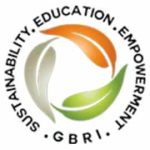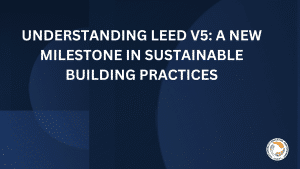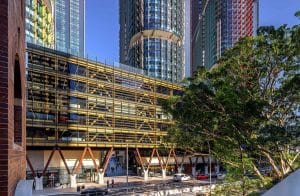LEED (Leadership in Energy and Environmental Design) is an internationally recognized green building certification system, providing third-party verification that a building or community was designed and built using strategies aimed at improving performance across all the metrics that matter most: energy savings, water efficiency, CO2 emissions reduction, improved indoor environmental quality, and stewardship of resources and sensitivity to their impacts.
Developed by the U.S. Green Building Council (USGBC), LEED provides building owners and operators a concise framework for identifying and implementing practical and measurable green building design, construction, operations and maintenance solutions.
A LEED credential denotes proficiency in today’s sustainable design, construction and operations standards. More than 203,000 professionals have earned a LEED credential to help advance their careers.
There are two types of LEED credentials that showcase your knowledge, experience and credibility in the green building marketplace as a LEED professional:
LEED Green Associate: A foundational professional credential signifying core competency in green building principles.
LEED AP with Specialty: An advanced professional credential signifying expertise in green building and a LEED rating system.
What is LEED Green Associate credential?
The LEED Green Associate credential designates individuals who have a documented, up-to-date understanding of the most current green building principles and practices. The LEED Green Associate is a foundational credential and for many it is the first step before earning advanced credentials such as the LEED AP with specialty.
LEED Green Associate Exam- How to register?
LEED exams are administered by the Green Business Certification Inc. (GBCI) for professionals seeking to earn credentials and certificates. To register for the LEED Green Associate exam, you need to follow these steps:
- Log into your usgbc.org site user account, then navigate to Credentials. Create a new account if you do not have one.
- Select the LEED Green Associate Exam.
- Complete the exam registration process.
- Schedule exam date and location on prometric.com/gbci. The exam is available six days a week (Monday-Saturday, 8 a.m. to 8 p.m.) at any Prometric Testing Center.
This registration is valid for one year. In that year you are allotted three registrations per exam section. After this year expires, you must wait 90 days before registering again. You may also request an extension of the one year registration period for extenuating circumstances.
When you register for the exam, make sure your name is entered as it appears exactly on your legal ID that you will use when you take your exam. If your native language utilizes non-Roman characters, be sure to use Roman characters when entering your name in your site-user account and when registering for the exam.
Also, please note that if you are living in the US, you are sure to find the Prometric Testing Center nearby as there are usually several in each major city. If you’re in an area where there is no such center, you can contact the USGBC for alternative testing methods.
Eligibility requirements for LEED Green Associate exam
There are absolutely no prerequisites or eligibility requirements for LEED Green Associate exam. However, USGBC does recommend that you have exposure to LEED and green building concepts through education, volunteering, or work experience.
Difficulty Level of LEED Green Associate exam
Even though some people might say that the LEED GA exam is more of a conceptual one, the reality is quite a bit different. Without a thorough understanding of the LEED prerequisites and credits, a candidate cannot ever guarantee passing the test. Yes, it is more basic than the LEED AP exam, but still it does involve a fair amount of learning and memorizing.
Many professionals believe that they can waltz into the LEED exam and rely on their previous building experience to get them a passing score. This is absolutely not true. The LEED GA exam tests a candidate’s understanding of the LEED technical standards, in particular. You’ll need to know how the USGBC defines a particular term and how the LEED standards would approach a certain concept.
Having said that, please note that no exam is hard if you know what to expect and if you prepare well. Study materials will help you understand what to expect in the exam, but remember that studying well is about you.
What is the passing score for LEED Green Associate exam?
LEED Green Associate exam comprises of 100 multiple-choice questions and its duration is two hours. You can be provided with translation aids in Arabic, Brazilian Portuguese, Chinese, French, German, Japanese, Korean and Spanish. To pass the exam, you must get a score of 170 or above out of 200.
Cost of taking LEED Green Associate exam
If you are a member of the USGBC, LEED Green Associate exam would cost you $200, and if not, you can take the exam for $250. For students, this exam costs just $100.
LEED Green Associate Exam- Study Resources
The key to earning a LEED Green Associate credential is a thorough understanding of green building practices and LEED. If you’re wondering where to find the best-in-class all inclusive exam prep material for the LEED GA exam, just head to the Green Building Research Institute (GBRI) – a proud Education Partner of the USGBC, IWBI, and AIA.
With GBRI’s study materials, you can earn your LEED Green Associate credential in as little as 5 weeks. Based on your schedule, attend the 4 week instructor-led live exam prep sessions OR utilize self-paced online on-demand exam prep modules.
GBRI LEED Green Associate Exam Prep includes a study guide, 5 LEED Green Associate practice exams with 100 questions each simulated like the actual exam, flash cards, memory charts, section wise quiz questions and much more!
What’s more, they also offer student, military, group, small business and corporate discounts. Contact them at [email protected] for more information and let GBRI help you take your career to the next level with your satisfaction guaranteed!
Remember that the LEED Green Associate is a closed-book exam. You have two hours to take 100 multiple-choice questions. You may see a few pick two or pick three questions, but most are multiple choice questions. Questions pertain to LEED v4 and all the LEED v4 Rating Systems.
Also Read:
What is included in my GBRI LEED v4 Green Associate Exam Preparation Package?
GBRI’s LEED v4 Green Associate Exam Preparation Package includes:
- Access to 5 LEED Green Associate practice tests with 500+ practice questions and answer explanations.
- Each practice test has questions that represent all LEED knowledge domains just like the actual exam. Questions will appear randomly from various concepts and not in a particular order.
- Once you have completed the mock exam, review each question and answer even if you selected the CORRECT answer choice to identify your gaps.
- A score of 85% or higher is a good indicator of being well prepared. If your score is below 85%, identify your gaps and review the online modules (available for purchase) as applicable before retaking the practice exam.
Few tips to ace the LEED Green Associate Exam
Listed below are a few tips that will guide you on how to pass the LEED Green Associate Exam-
- Most of the questions involve applied and critical thinking, so it is extremely important to have a thorough understanding of concepts instead of just memorizing.
- Read the exam paper carefully, and then read it again. Likewise, check and recheck all your answers. Use the ‘Mark’ button to flag questions you don’t feel sure about. Since you get 2 hours to complete 100 questions, you can always come back to the ‘marked’ questions after you’re done with the rest.
- It is definitely advisable to take a look at the Green Associate handbook found on the GBCI website. The handbook will tell you important information about what is covered in the exam, as well as test taking policies. And then of course you have the GBRI to help you with the study materials.
- You can never take enough practice tests. Take loads of them to ensure you have a fair idea of the actual test content.
- It is very important to memorize all numbers related to Minimum Program Requirements (MPRs).
- You should have in-depth knowledge of the four ASHRAE standards used in LEED- ASHRAE 90.1 – Energy
ASHRAE 55 – Thermal Comfort
ASHRAE 52.2 – Air Filters
ASHRAE 62.1 – Ventilation
- When you feel there is more than one right answer to a particular multiple choice question, go with the ‘best’ answer. For example, implementing a concept that reduces carbon emissions will be a better answer than one that promotes the local economy or saves water.
- Before you start the two-hour exam, you get ten minutes to familiarize yourself with the testing controls along with a scrap paper and a pen. Take those precious ten minutes to recall all the concepts/numbers you’ve memorized. Jot down the ones you are worried about getting confused on during your exam.
Please note that the USGBC has a pool of 1000+ questions out of which they frame their 100-question exams, so no two exams will look the same. The USGBC does not share its database of questions with anyone.
Maintaining LEED Green Associate Credential
All LEED professionals are required to maintain their credential by earning continuing education hours. LEED Green Associates must earn 15 continuing education hours within 2 years of earning their credential. You can earn hours through various activities related to green building including education, project experience, authorship and volunteering.
Also Read:
5 ways to earn your LEED and AIA CE hours without breaking your bank
I have earned my LEED Green Associate credential- What next?
Once you’ve gained the LEED Green associate credential, you might want to take your LEED credential to the next level. In order to realize this goal, you would need to take the LEED AP exam.
It should be noted that a candidate can take both these exams back to back in one day. However, most people will study for one at a time because the knowledge base is extensive for a LEED AP.
A LEED Accredited Professional (AP) credential signifies an advanced depth of knowledge of green building practices and by extension, an even greater commitment towards sustainable building. Earning a LEED AP credential requires specializing in a specific field. The specialization of LEED designation resembles the specialization of graduate school. To gain higher levels of mastery in a subject, one must specialize. You can specialize in each of the different rating systems of LEED that are listed below –
Also Read:
- LEED AP Building Design + Construction – This rating system includes guidelines for new buildings and old buildings undergoing major renovations.
- LEED AP Operations + Maintenance – This category can be used by building owners and operators to measure operations and maintenance as well as make minor improvements.
- LEED AP Interior Design + Construction – This rating system was designed specifically for tenants leasing a portion of a larger building.
- LEED AP Neighborhood Development – This category integrates the principles of smart growth, urbanism, and green building into the first national program for neighborhood design.
- LEED AP Homes – This was specifically designed for single and multi-family residential structures that are three stories or less











